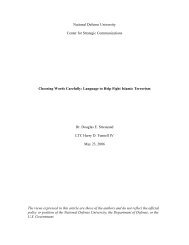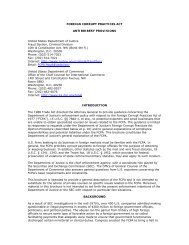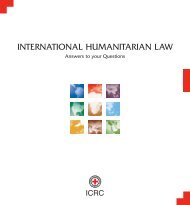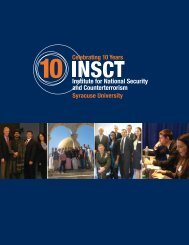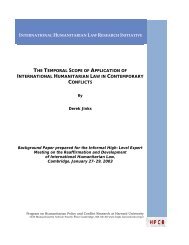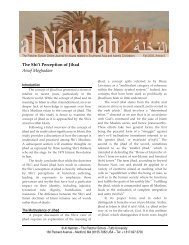some reflection on post-enlightenment qur'anic hermeneutics
some reflection on post-enlightenment qur'anic hermeneutics
some reflection on post-enlightenment qur'anic hermeneutics
Create successful ePaper yourself
Turn your PDF publications into a flip-book with our unique Google optimized e-Paper software.
Special] Post-Enlightenment Qur’anic Hermeneutics 1409fascinati<strong>on</strong>. 13 It is actually three periods, and the demarcati<strong>on</strong> of these periods,like all such efforts in history, is <str<strong>on</strong>g>some</str<strong>on</strong>g>what blurred. The first period,referred to as the “formative” period, extends from the time of the death ofthe Prophet Muhammad in 632 C.E. up to the years just before the establishmentof the Abbasid Caliphate in Baghdad in 750 C.E. 14 The sec<strong>on</strong>dperiod, described by Marshall G.S. Hodgs<strong>on</strong> as “The Classical Civilizati<strong>on</strong>of the High Caliphate” 15 began with the founding of a small but powerfulagrarian-based centralized state in Baghdad in 692 C.E. and c<strong>on</strong>tinued withthe emergence of an imperial government in Baghdad in 750 C.E. 16 Thisgovernment, led by a series of visi<strong>on</strong>ary Caliphs and characterized by theemergence of elite classes comprised of physicians, jurists, theologians, andsoldiers commanding slave armies, flourished for over two hundred yearsand virtually transformed Islam into a world religi<strong>on</strong>. 17 The third period,characterized by the decline of the Baghdad Caliphate and a c<strong>on</strong>comitantrise of regi<strong>on</strong>al sultanates and other local governments claiming caliphalstatus, began in about 935 C.E. and extended for another three hundred yearperiod until Baghdad fell to the M<strong>on</strong>gols in 1258 C.E. 18 Although theBaghdad Caliphate at the center of the empire waned in power, the earlyexample it established for the c<strong>on</strong>duct of scholarship and intellectual andreligious discourse became the model for the rising outlying sultanates andmini-caliphates. 19 Scholars working in the outer regi<strong>on</strong>s c<strong>on</strong>tinued to proficientlyadvance the Islamic jurisprudential and theological project in impor-AMERICAN ACADEMY OF POLITICAL AND SOCIAL SCIENCE 13 (1992). Professor Khaled AbouEl Fadl has argued that the idea of a “Golden Age” is really a product of the imaginati<strong>on</strong> ofthe salafists and Islamic revivalists who seek to return to a pristine versi<strong>on</strong> of Islam. See,Khaled Abou El Fadl, Islam and the Theology of Power, 221 MIDDLE EAST REPORT 28, 32-33(2001).13. See, e.g., HUGH KENNEDY, WHEN BAGHDAD RULED THE MUSLIM WORLD: THERISE AND FALL OF ISLAM’S GREATEST DYNASTY (2005).14. See LAPIDUS, supra note 11, at 31-66.15. HODGSON, supra note 11, at 231.16. Id. at 233-314.17. See generally WAEL B. HALLAQ, THE ORIGINS AND EVOLUTION OF ISLAMIC LAW122-93 (2005) (discussing the development of the judiciary, legal reas<strong>on</strong>ing, and legal authorityduring the first century as well as the dramatic rise of prophetic authority, the crystallizati<strong>on</strong>of legal theory, and the formati<strong>on</strong> of the all-important legal schools during the classicalperiod). See also, generally, MARSHALL G.S. HODGSON, 2 THE VENTURE OF ISLAM:CONSCIENCE AND HISTORY IN A WORLD CIVILIZATION at 12-200 (describing these events asthe establishment of an “internati<strong>on</strong>al civilizati<strong>on</strong>” and “internati<strong>on</strong>al political order” andoffering specific examples of such developments); JOSEPH SCHACHT, THE ORIGINS OFMUHAMMADAN JURISPRUDENCE 269-282 (2d ed. 1953) (detailing the crystallizati<strong>on</strong> of legaldoctrine in the classical era).18. See LAPIDUS, supra note 11, at 112-32.19. Id. See also HALLAQ, supra note 17, at 172-77.



